The globetrotting emerging designer every wanderluster should know
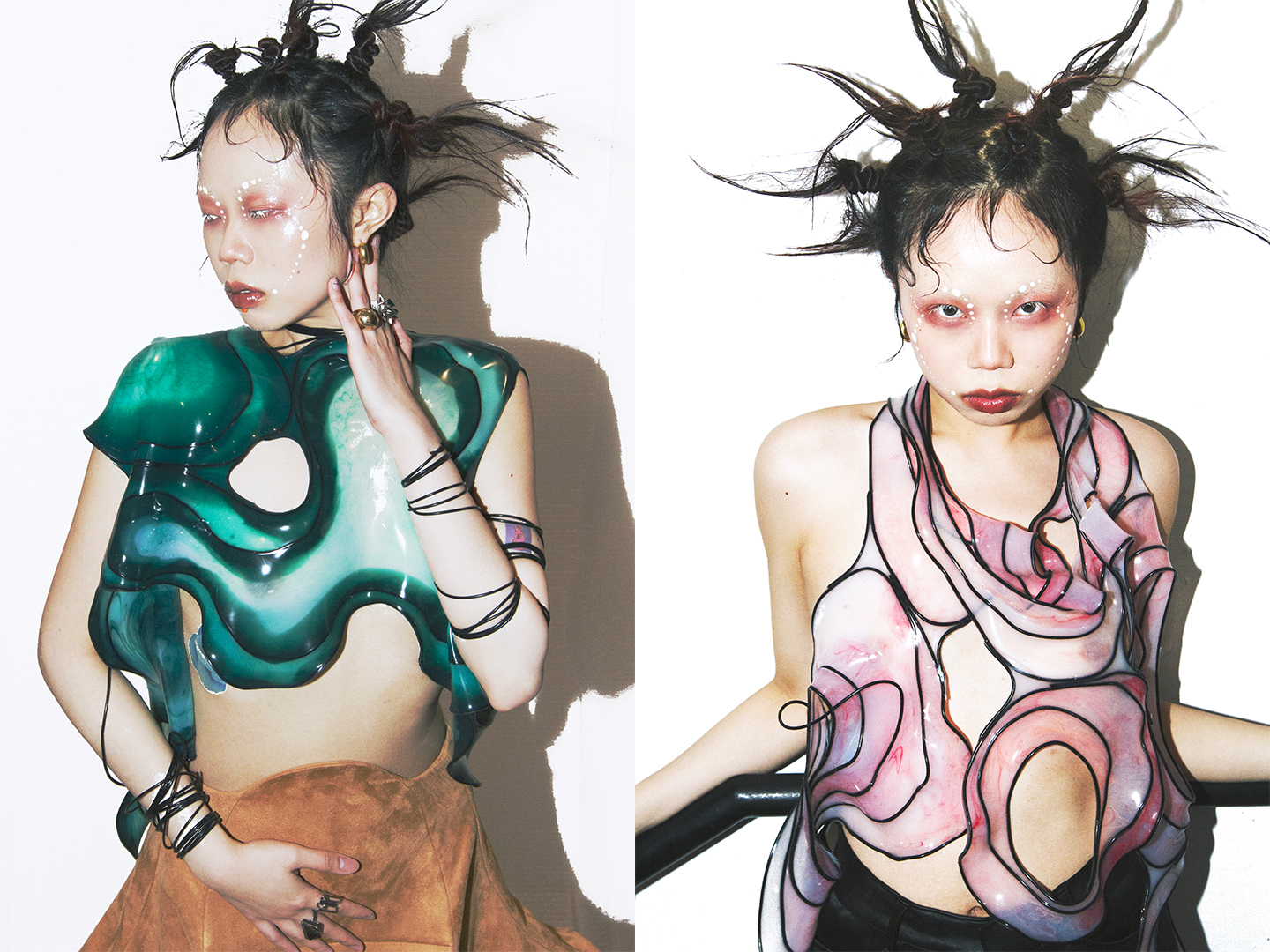
Picture credits for this photoshoot: Designer: Weihuai Zhang @_iwai_; Stylist: Weihuai Zhang; Photographer: Yuqi Zeng @iifins; Hair & Makeup: Mengxi Lyu @fotground; Model: Hongshui @imredddddd
Some places are talent magnets. London is one of the most powerful at attracting and spreading talents in different art fields, only to give them back anew. Young talents that feel the urge to express their potential are gravitating towards London to stand out from the crowd and mostly to feed themselves with future-forward vibes and contaminate their art. Nobody emerges the same from a deep dive into the London creative scene.
One such example is the young Chinese fashion designer Weihuai Zhang, in art Iwai Zhang, who relocated to London to experience the subculture vibes that only the UK capital can give, attending Istituto Marangoni London, where he recently achieved an MA in Womenswear Fashion Design.
He is a skilled fashion designer with a solid education in textile and creative design and a stylish-eclectic and multidisciplinary approach to fashion. Before moving to London, he graduated from Wuhan Textile University. He earned a Bachelor's degree in Fashion Creative Design at Bunka Gauken University in Tokyo, Japan, experiencing different cultural contexts that shaped his creativity and skills.
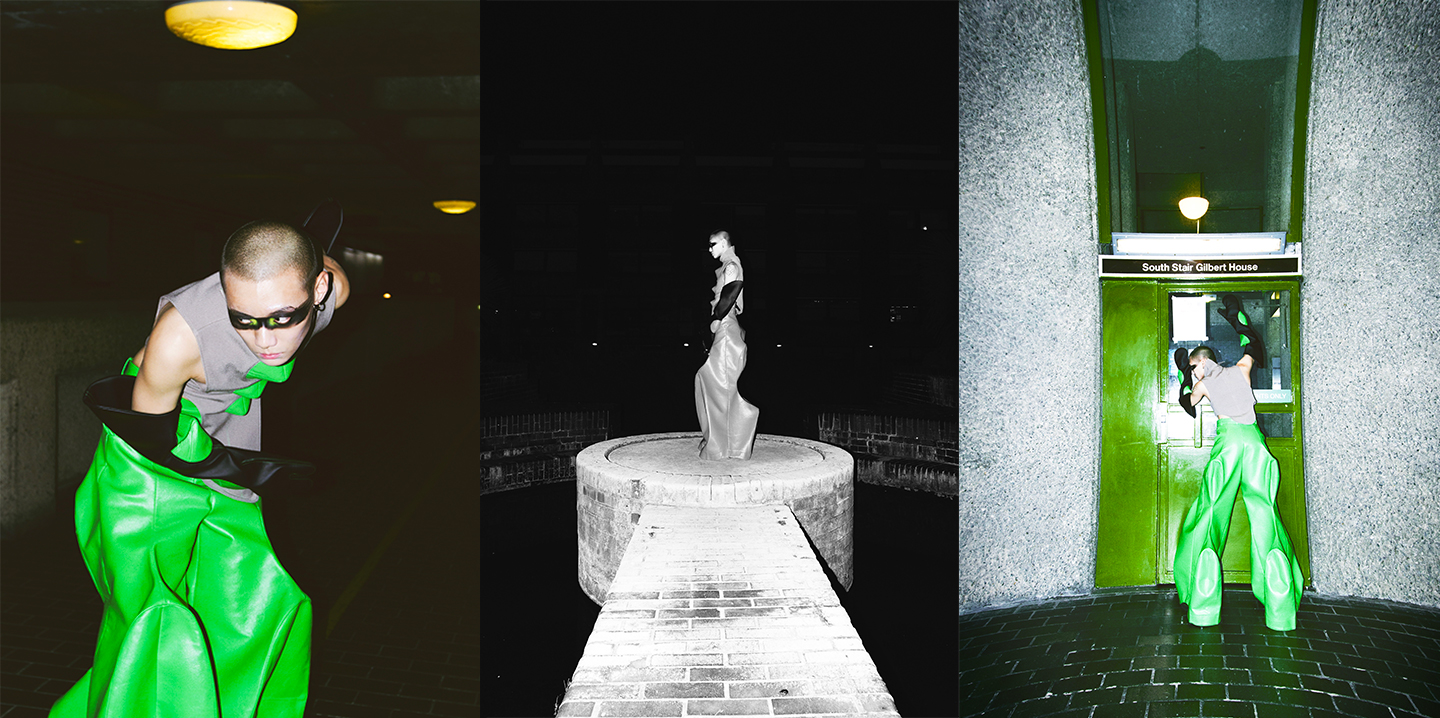
Picture credits for this photoshoot: Designer: Weihuai Zhang @_iwai_; Stylist: Weihuai Zhang; Photographer: Yuqi Zeng @iifins; Hair & Makeup: Mengxi Lyu @fotground; Model: Weihuai Zhang
Iwai Zhang has a talent for the long processes of experimenting with materials and techniques that drive the actual creation of garment prototypes, understanding the importance of a deep search for inspiration. Not surprisingly, he drew inspiration from the iconic sci-fi film Blade Runner for his graduate collection ‘Born’ at Istituto Marangoni in London, where he also applied scientific concepts of human nature.
We sat down with Iwai Zhang for a chat to discover the making of his collection ‘Born’, which is sure to teleport you to a world of post-human replicas, silicon rubber and artificial beings.
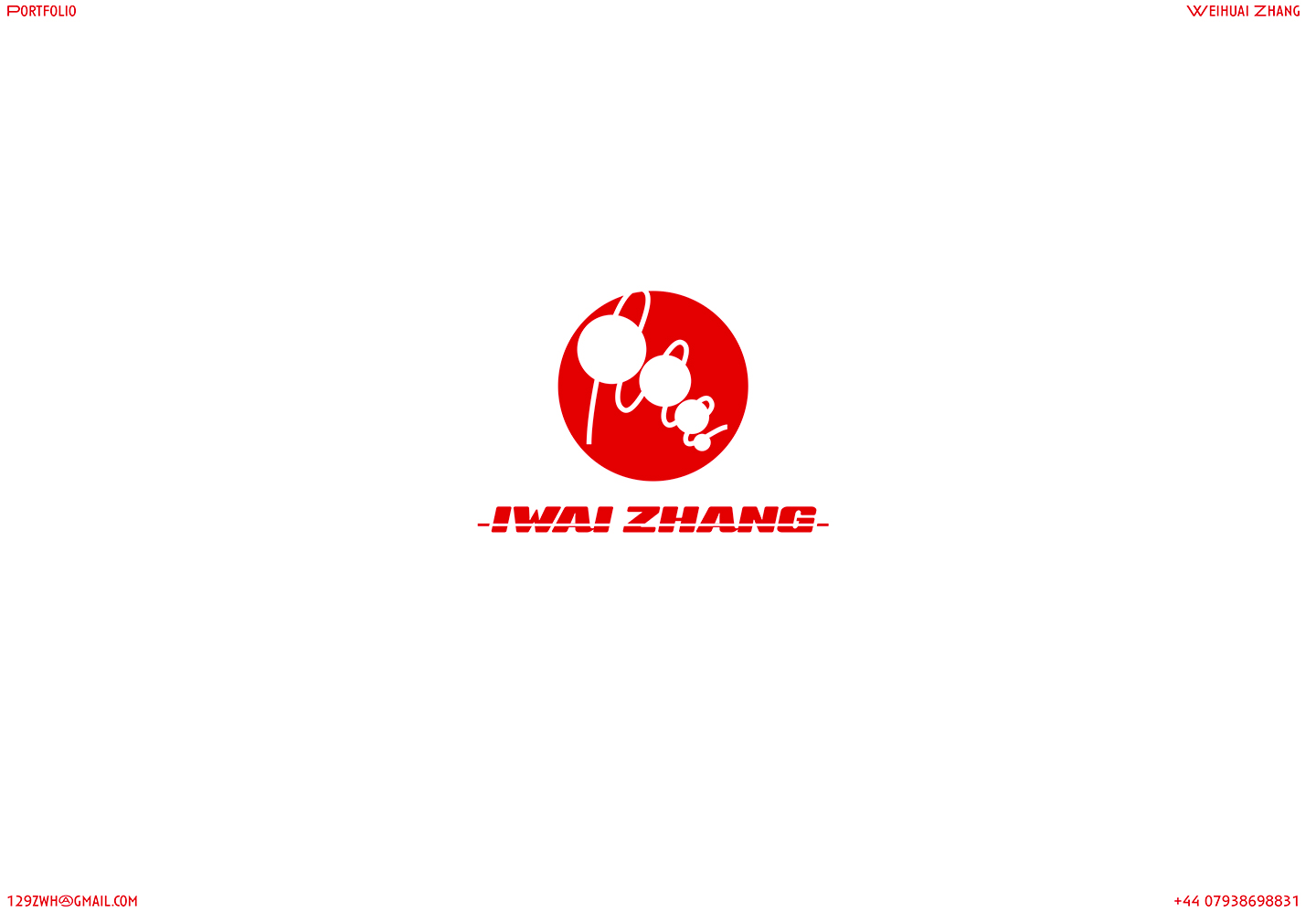
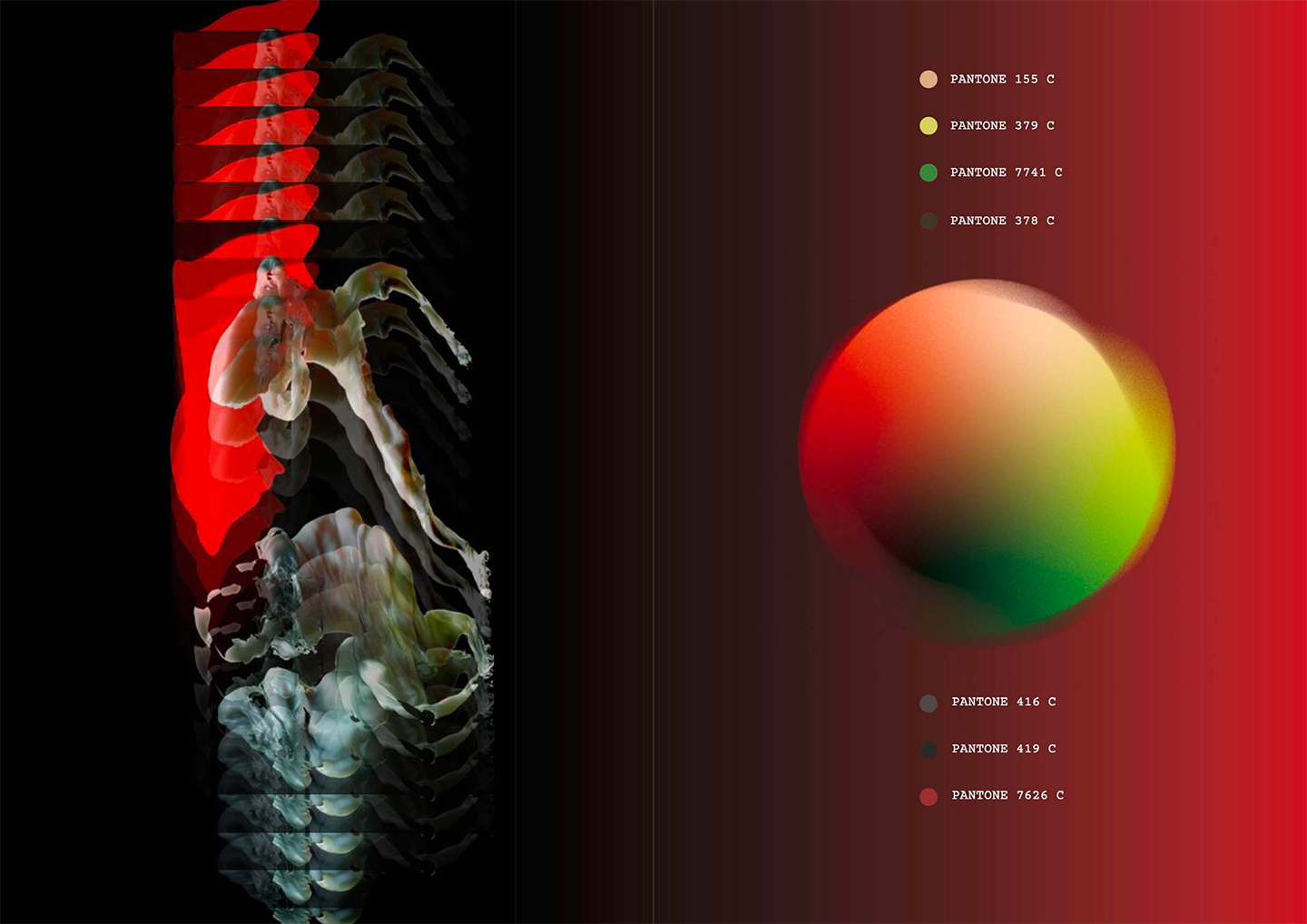
Logo and colour board from the portfolio of designer and Istituto Marangoni London alumnus Weihuai Zhang
Your portfolio presents your capsule collection for your final ‘Born’ project at Istituto Marangoni London. Where did you get your inspiration from?
This project was inspired by Ridley Scott’s 1982 science fiction film Blade Runner, which mainly tells the story of a future world where humans hunt and kill replicants after creating them. This plot allows us to reflect on our very essence – what is human nature? I think this is a possible scenario of a post-human era: if humans and post-humans were to coexist, would there be conflicts due to unequal abilities or rights?
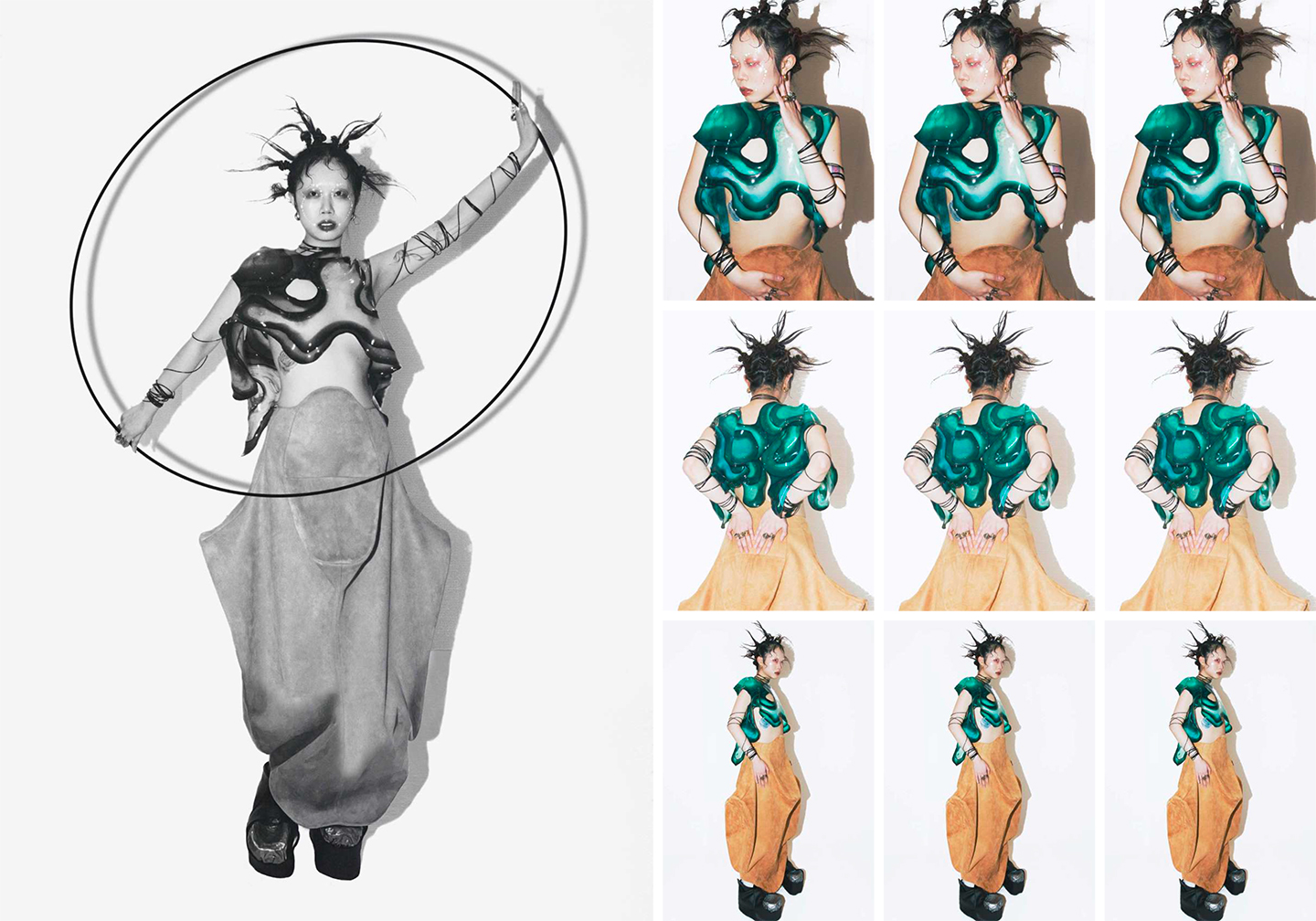
Picture credits for this photoshoot: Designer: Weihuai Zhang @_iwai_; Stylist: Weihuai Zhang; Photographer: Yuqi Zeng @iifins; Hair & Makeup: Mengxi Lyu @fotground; Model: Hongshui @imredddddd
How did you assemble your portfolio?
Creating a portfolio has meant organising a large amount of research from my sketchbook, which is rich in visual language.
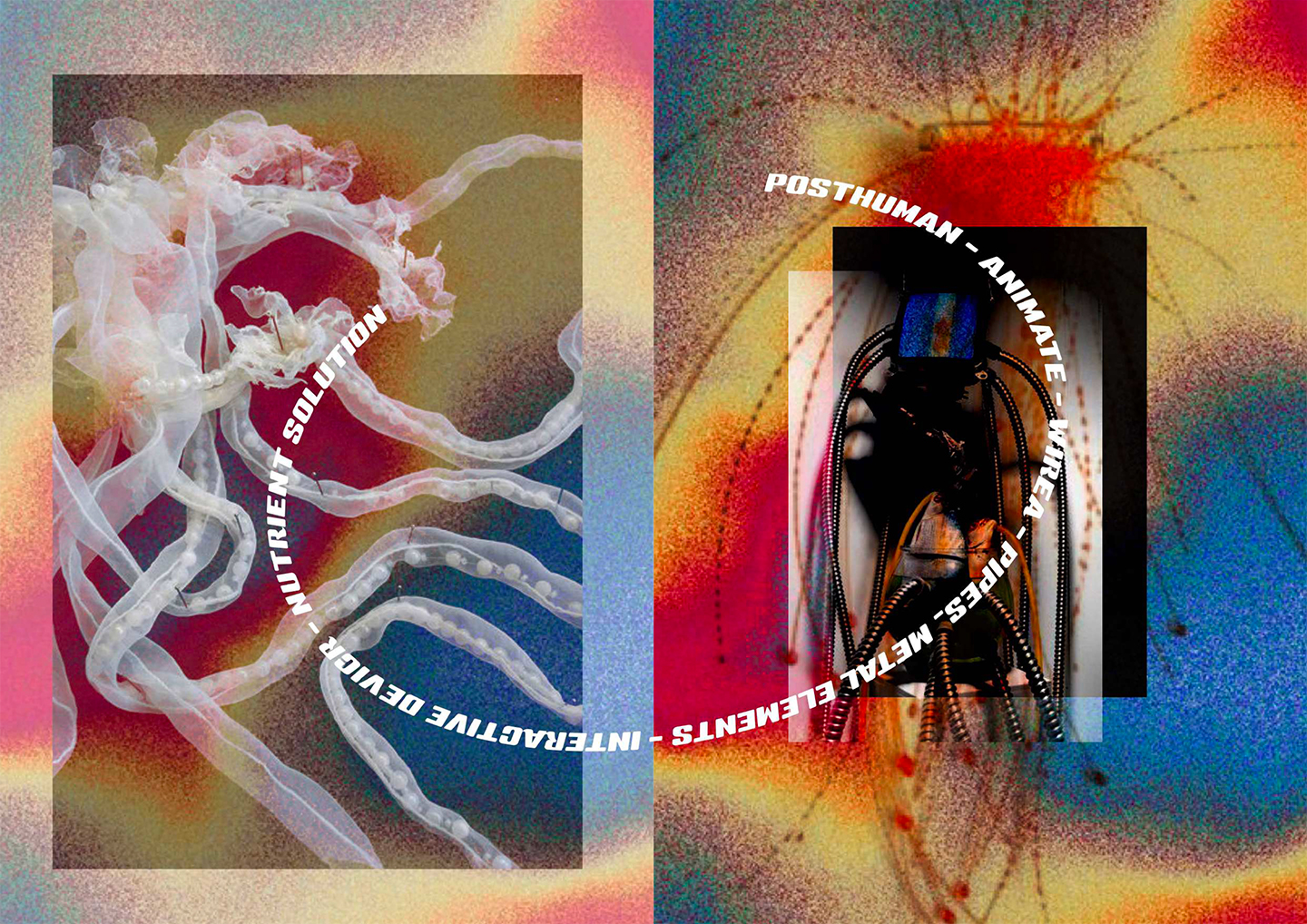
Pages from the portfolio of designer and IM London alumnus Weihuai Zhang
I am often inspired by science fiction films, many of which describe creating artificial beings nurtured inside a transparent artificial incubator resembling a womb. These artificial beings are connected by multiple cables that provide them with nourishment. They show imperceptible movements inside the incubator. From this scenario, I can derive various keywords, such as transparent and soft materials, cables, bubbles or inflatable devices, to simulate the pulsations of life forms.
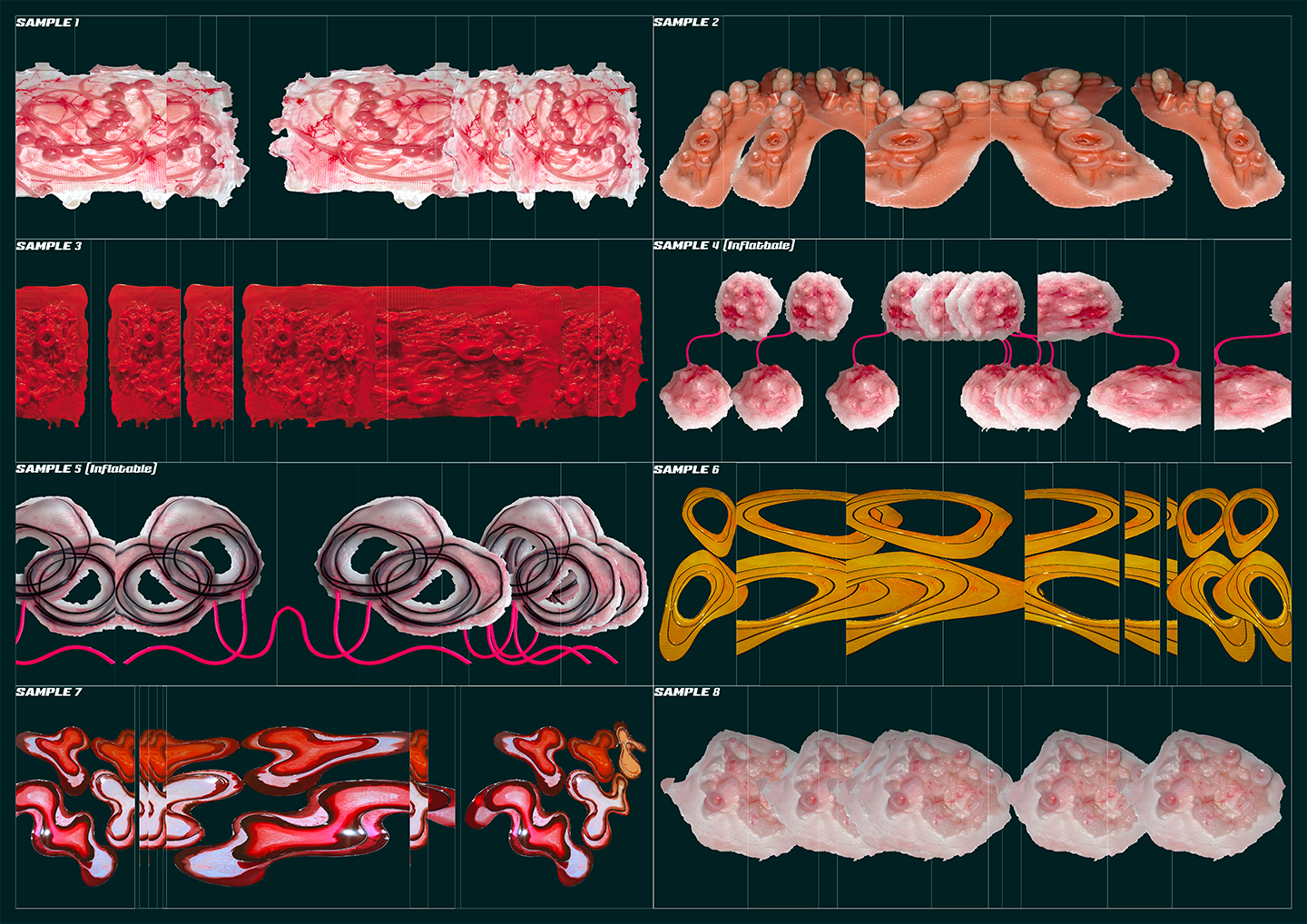
Pages from the portfolio of up-and-coming designer and IM alumnus Weihuai Zhang
You used a vacuum-forming machine to create your designs. Why were you interested in this process?
It is fascinating to use a vacuum-forming machine to create moulds. We know that meat products sold in supermarkets are often preserved through vacuum compression, similar to creating and maintaining artificial organs or marketing them in a futuristic world. Also, using a vacuum-forming machine to make moulds is very efficient, and the resulting moulds are more refined than those made with other methods.
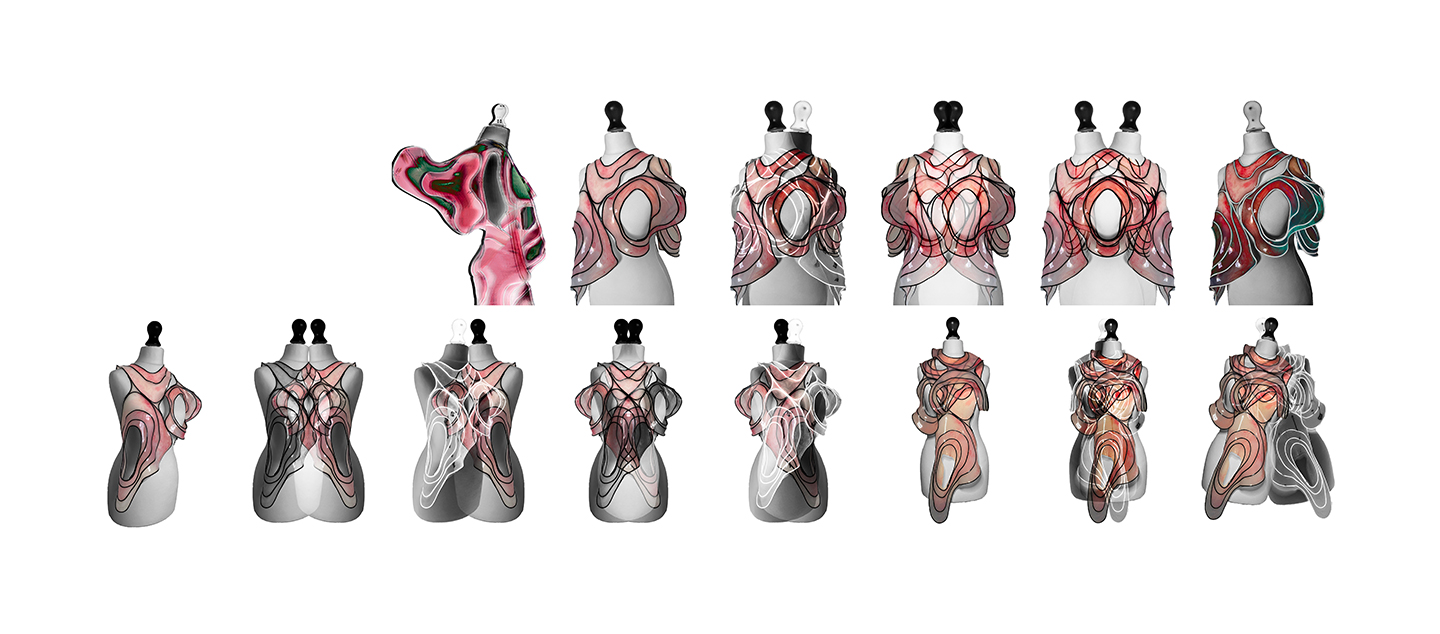
Pages from the portfolio of emerging designer Weihuai Zhang
About your silhouette series, what were the challenges of this complex design?
I tried to combine organic and inorganic forms. The inspiration came from the image of cyborgs, characterised by smooth, curved metal plates and protruding parts. I strive for my silhouettes to exude a sense of solidity and exaggeration, evoking a futuristic, industrial aesthetic. The contrast between the soft silicone rubber and the rigid shapes is intentional – it represents the post-human image I intend to portray. Using textures, darts, adhesive interlines of different thicknesses and covering tapes, I transformed the initial relatively flat structure into a three-dimensional shape. After numerous calculations and experiments, the three-dimensional shape was finally made smooth. This structure was transformed and applied to other looks in the series.
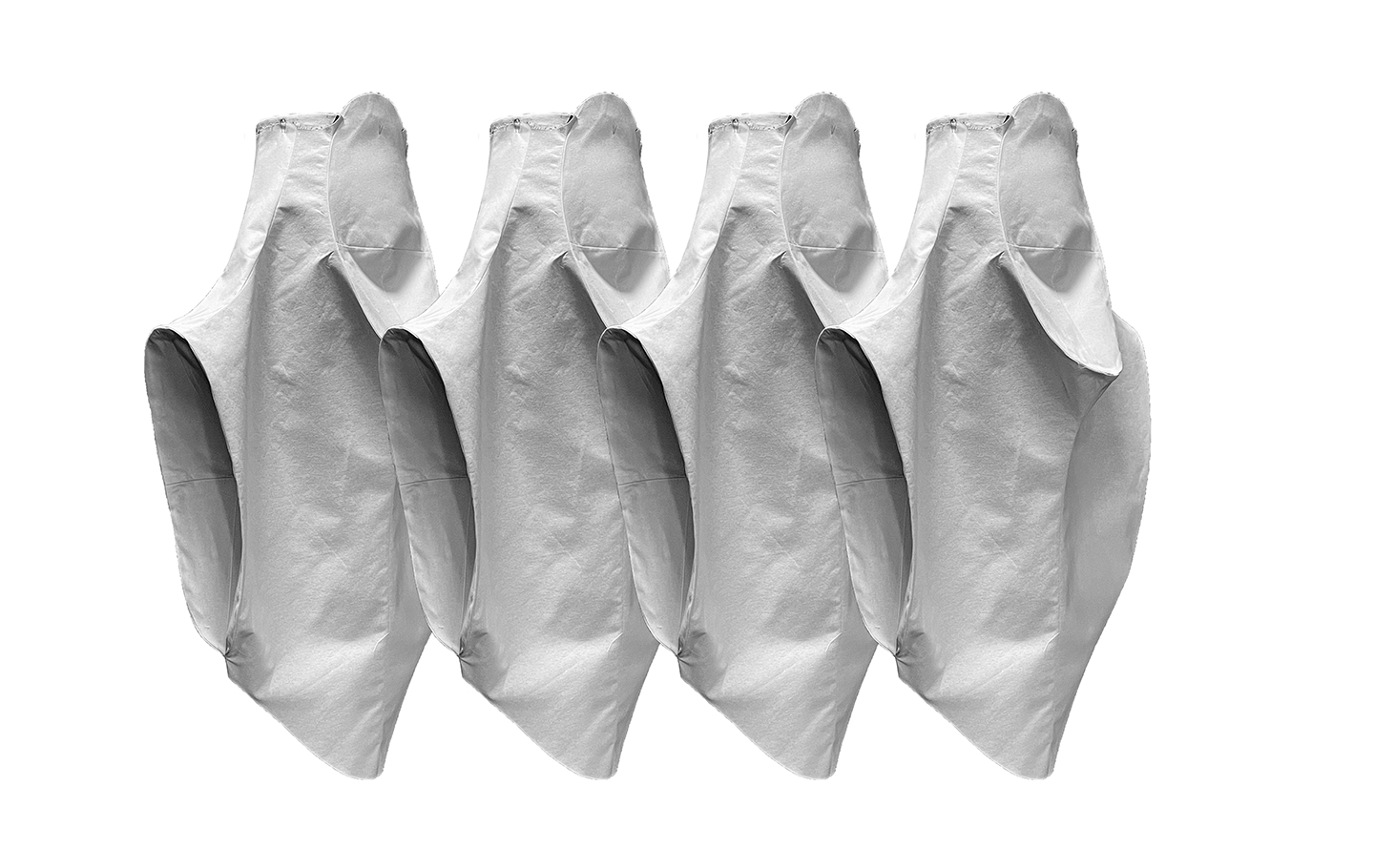
Silhouettes from the portfolio of designer and IM alumnus Weihuai Zhang
Do you feel it is still an essential path for fashion designers to know how to sketch and draw with pencils, even with the advanced digital drawing tools available today?
Typically, I sketch with a pencil in my sketchbook and then transfer it to Procreate for colouring. I find digital drawing tools to be very convenient and efficient, but pencil drawing is something that can never be replaced. I feel the friction between the pencil tip and the paper when I draw with a pencil. The thickness of the lines and the depth of colours can express the emotion and soul of the artwork, making it more vibrant and alive.
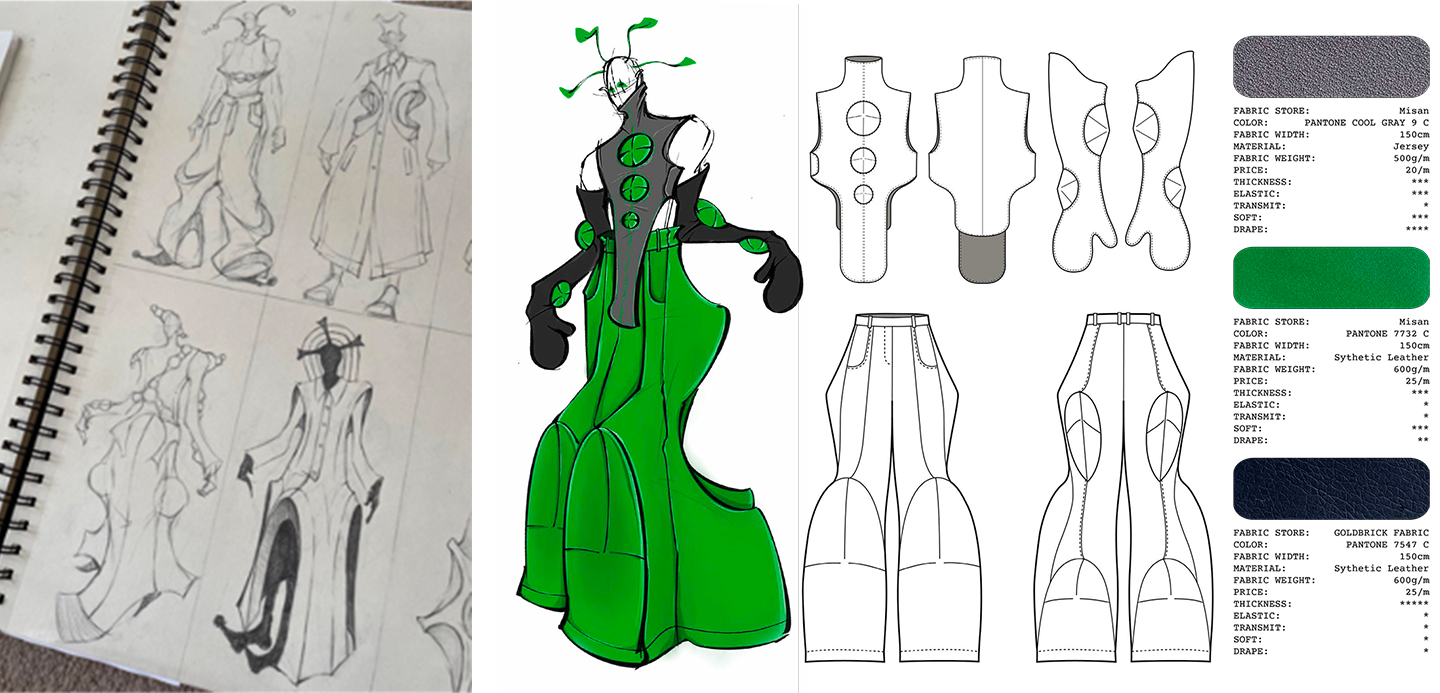
Drawings from the portfolio of designer and IM alumnus Weihuai Zhang
A central part of your portfolio is the creative direction of the photoshoot for the ‘Born’ collection. What is the concept behind this personal work and experience?
I researched the make-up, hairstyles, and location for the final shoot. I also acted as the model for one of the looks. As a designer, I believe it is crucial to consider the details of the photoshoot personally. For example, for the make-up of the first look, I paid tribute to the character Pris from Blade Runner. The photoshoot took place at the Barbican Centre in London, exuding a cyberpunk atmosphere in its architectural style and colour coordination.
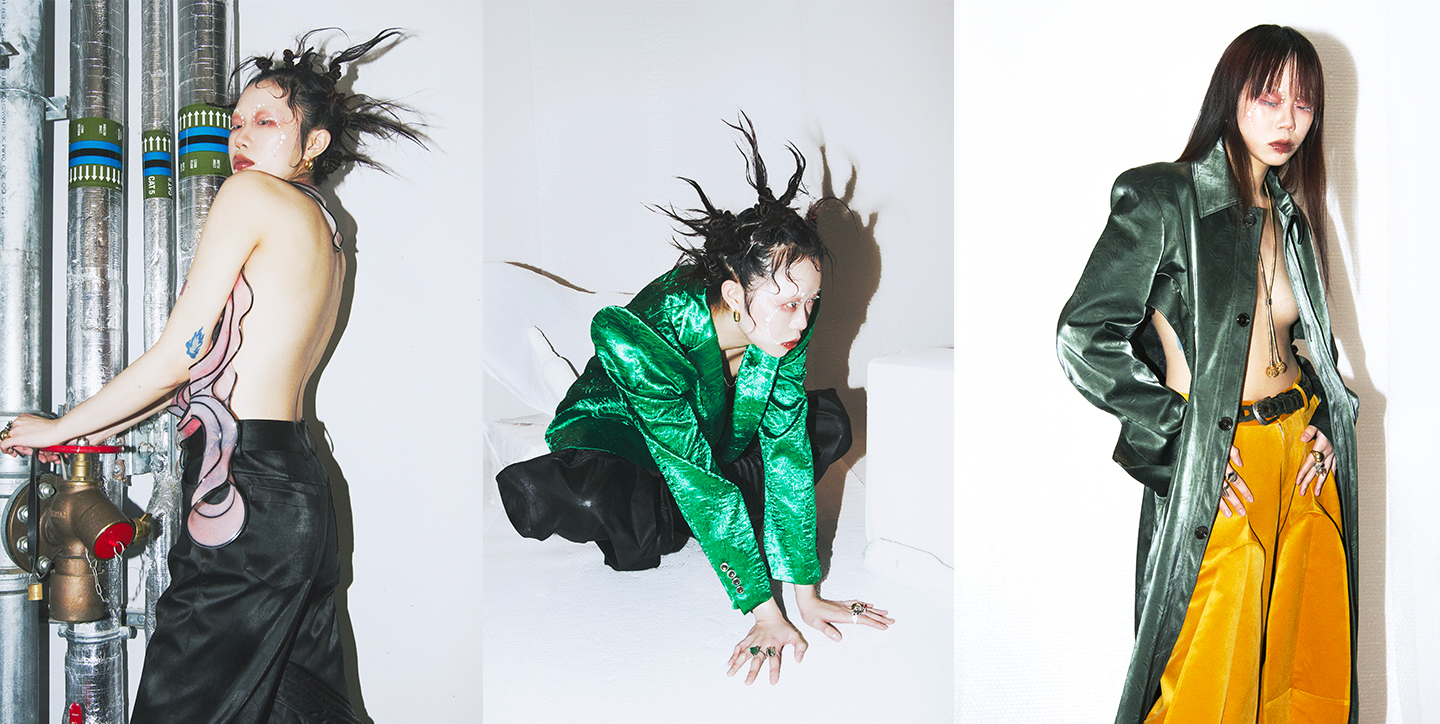
Picture credits for this photoshoot: Designer: Weihuai Zhang @_iwai_; Stylist: Weihuai Zhang; Photographer: Yuqi Zeng @iifins; Hair & Makeup: Mengxi Lyu @fotground; Model: Hongshui @imredddddd
Over your portfolio research, how did you approach Kente Cloth, a traditional African textile?
The Kente Cloth is an intricate and time-consuming production process. However, I discovered that the market is flooded with printed fabrics featuring those patterns, composed of multiple geometric motifs layered together. In my view, this is a desecration of traditional culture. In pursuit of efficiency and cost reduction, Kente Cloth has lost its soul and essence. Printed versions have a flat surface, unlike handwoven Kente Cloth, which has a textured and raised surface that can be felt when touched. Therefore, I pushed to emphasise its three-dimensionality deliberately. I noticed they appear as overlapping shapes when viewed from a three-dimensional perspective. Hence, fabric layering is my primary design element in this part of my work.
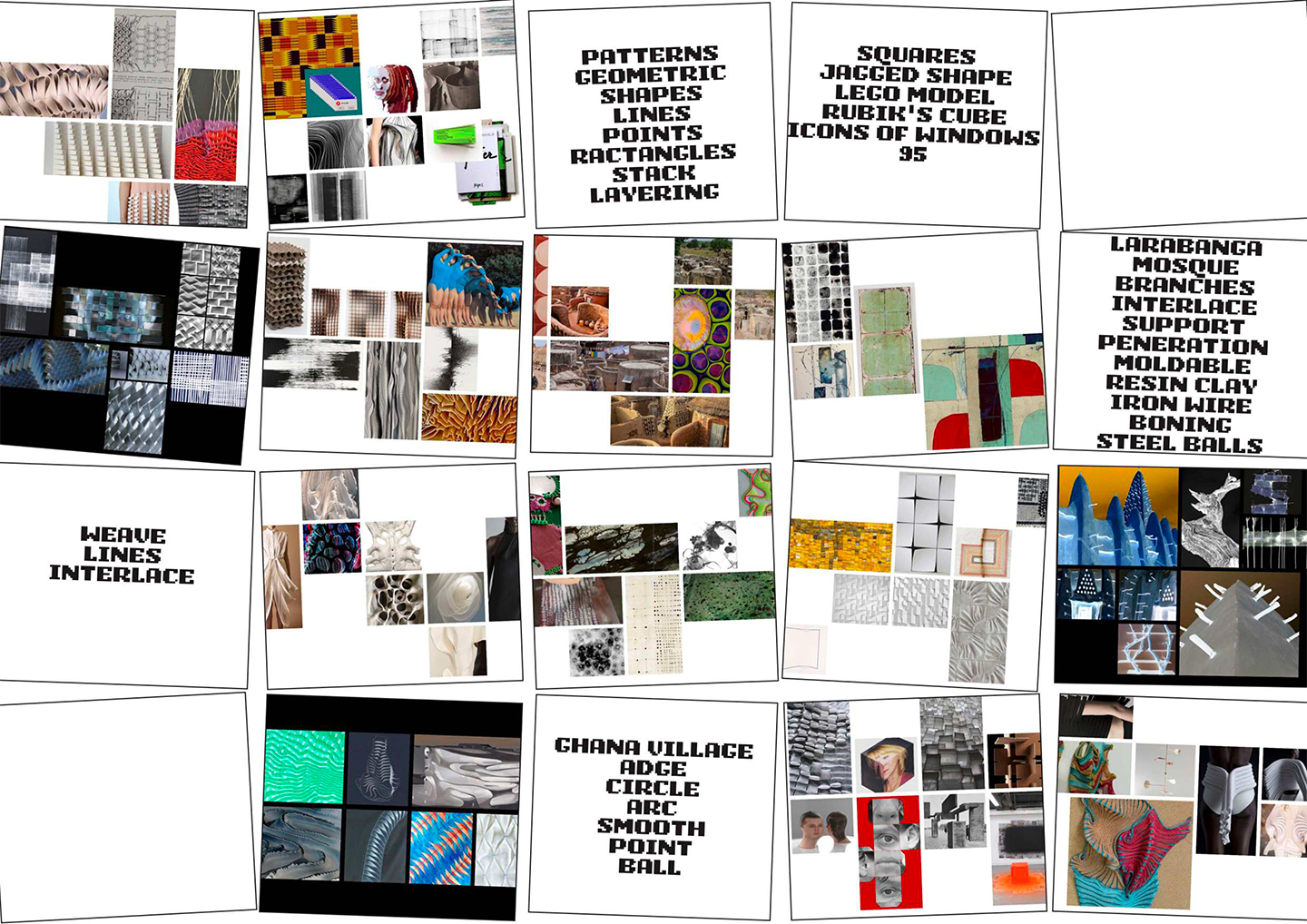
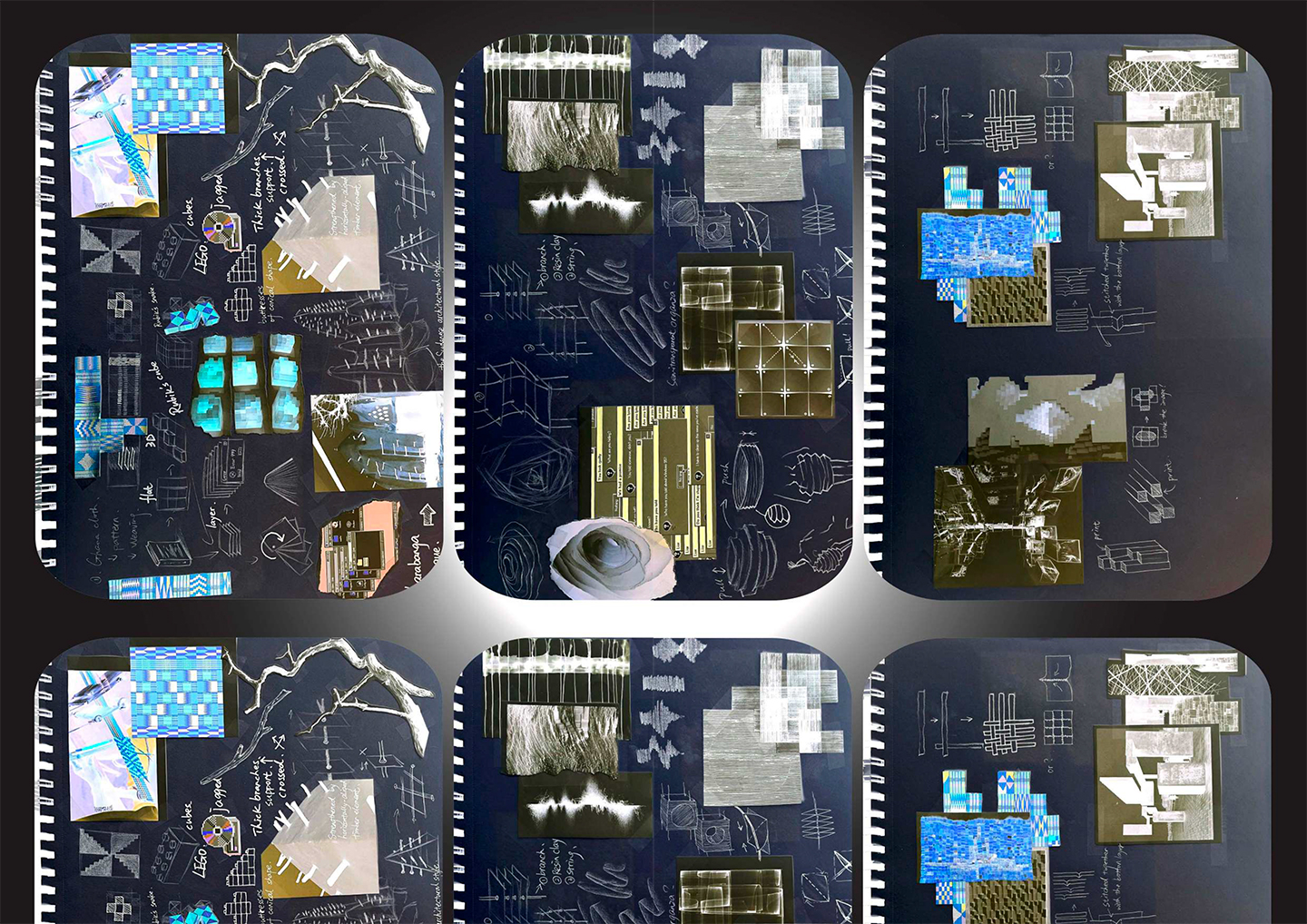
Kente Cloth research from Weihuai Zhang's portfolio
Another section of your portfolio features fabric manipulation. Tell us about this process.
I thoroughly enjoy the process of fabric manipulation. Its unpredictability often leads to unexpected outcomes, inspiring further design development.
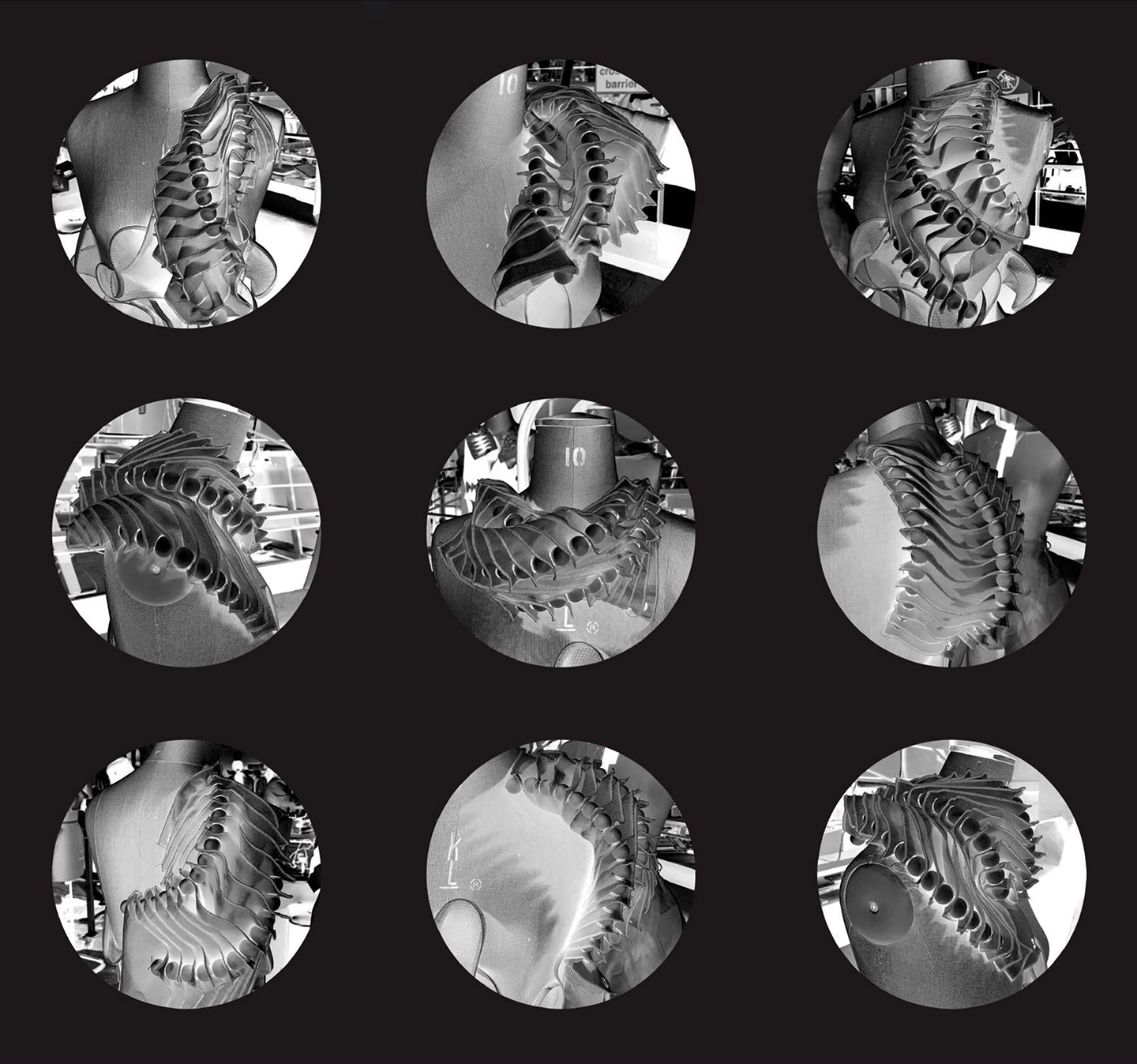
Research on fabric manipulation from the portfolio of IM student Weihuai Zhang
As mentioned earlier, fabric layering is a key design element for me, and when considering how to connect each fabric piece, the Larabanga Mosque inspired me. The Larabanga Mosque is a Sudanese-style mosque in the village of Larabanga, Ghana. It is constructed using wattle and daub, with tree trunks piercing the walls for support. Taking cues from its appearance, I experimented with wire to connect the pieces of fabric.
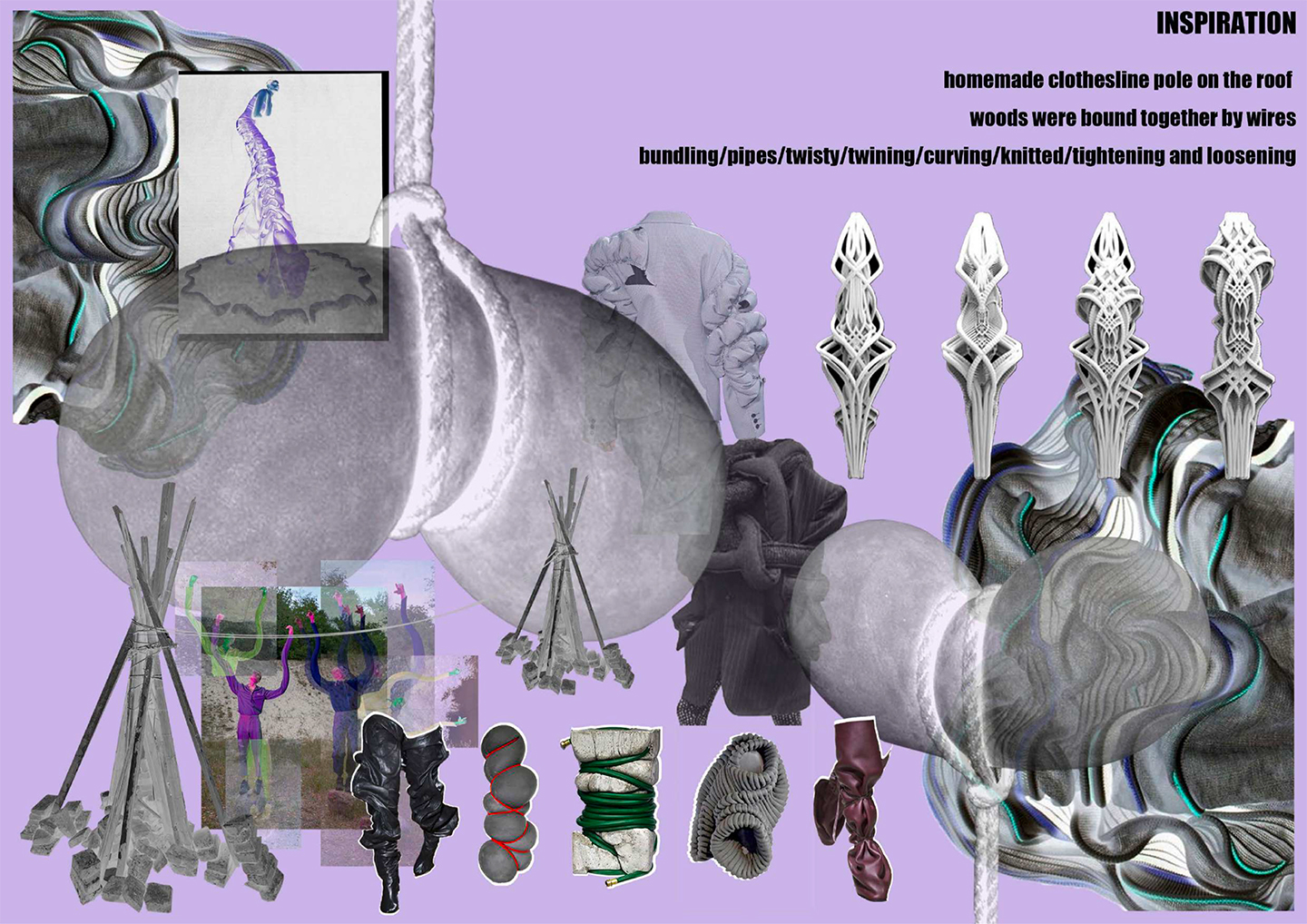
Visual research from Weihuai Zhang's portfolio
The “Take me home” section is very personal. How did you interpret it in relation to your fashion design work?
The theme of this collection is “Old House,” which holds many memories of my childhood. I lived there from birth until I turned ten.
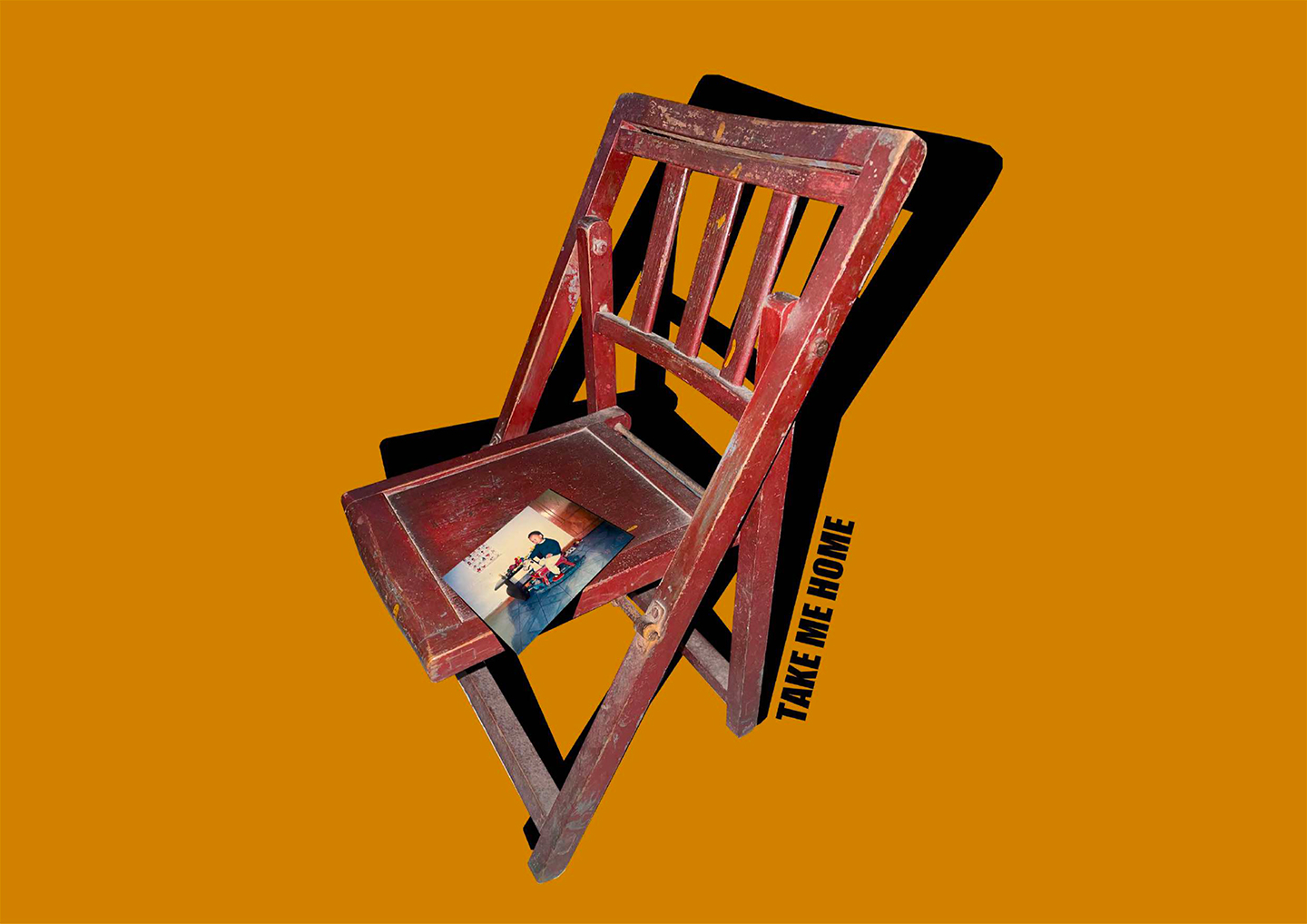
The “Take me home” section from Weihuai Zhang's portfolio
When I returned there as an adult, everything felt both familiar and unfamiliar. I was intimately familiar with every corner of the old house, yet curious about the details I had not noticed as a child. With this collection, I aim to redefine the fragments of my childhood through my adult perspective. For instance, the homemade clothesline pole on the roof is truly fascinating. I spent most of my childhood summers on that rooftop but never observed its structure. It was made from discarded cables and wooden strips, arranged in a pyramid and secured at the top with cables. It was ingenious to repurpose waste materials to create something new, so I incorporated a recycling strategy into this project.
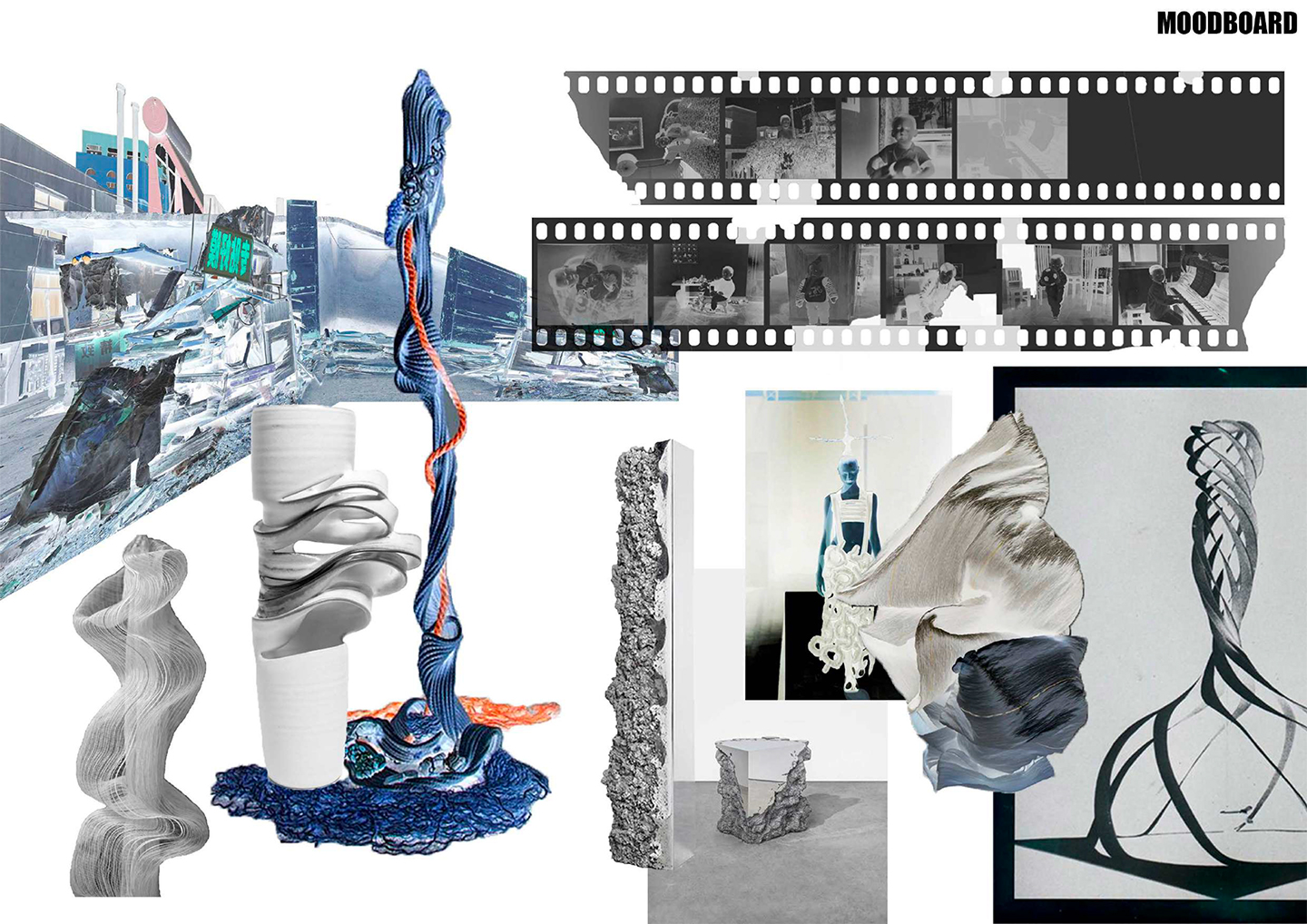
A moodboard from Weihuai Zhang's portfolio
Is sustainability a big part of your design ethos?
My environmental strategies primarily involve two aspects: zero-waste and recycling. The inspiration for zero-waste comes from the hollowed-out stone windows in the stairwell of the old house: I can cut and piece together small fabric scraps to create larger reconstructed fabrics. Recycling is reflected in the use of waste threads from fabric factories and leftover materials from designer studios.
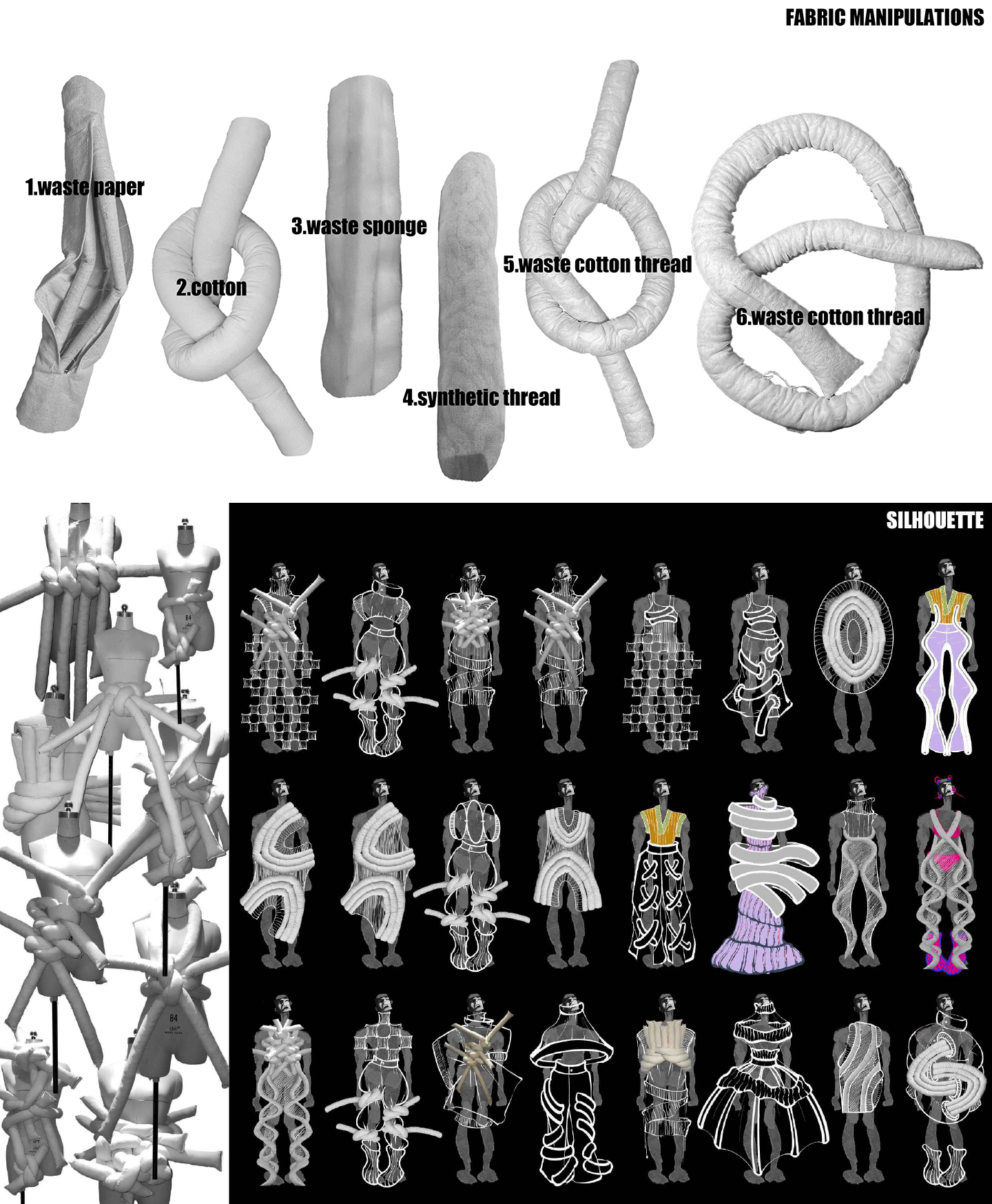
Pages from the portfolio of designer and IM alumnus Weihuai Zhang
What about your plans?
I am moving to Shanghai now for an internship experience in a fashion brand, I do hope to be able to come back in London soon. In the future, I aspire to establish my own brand.
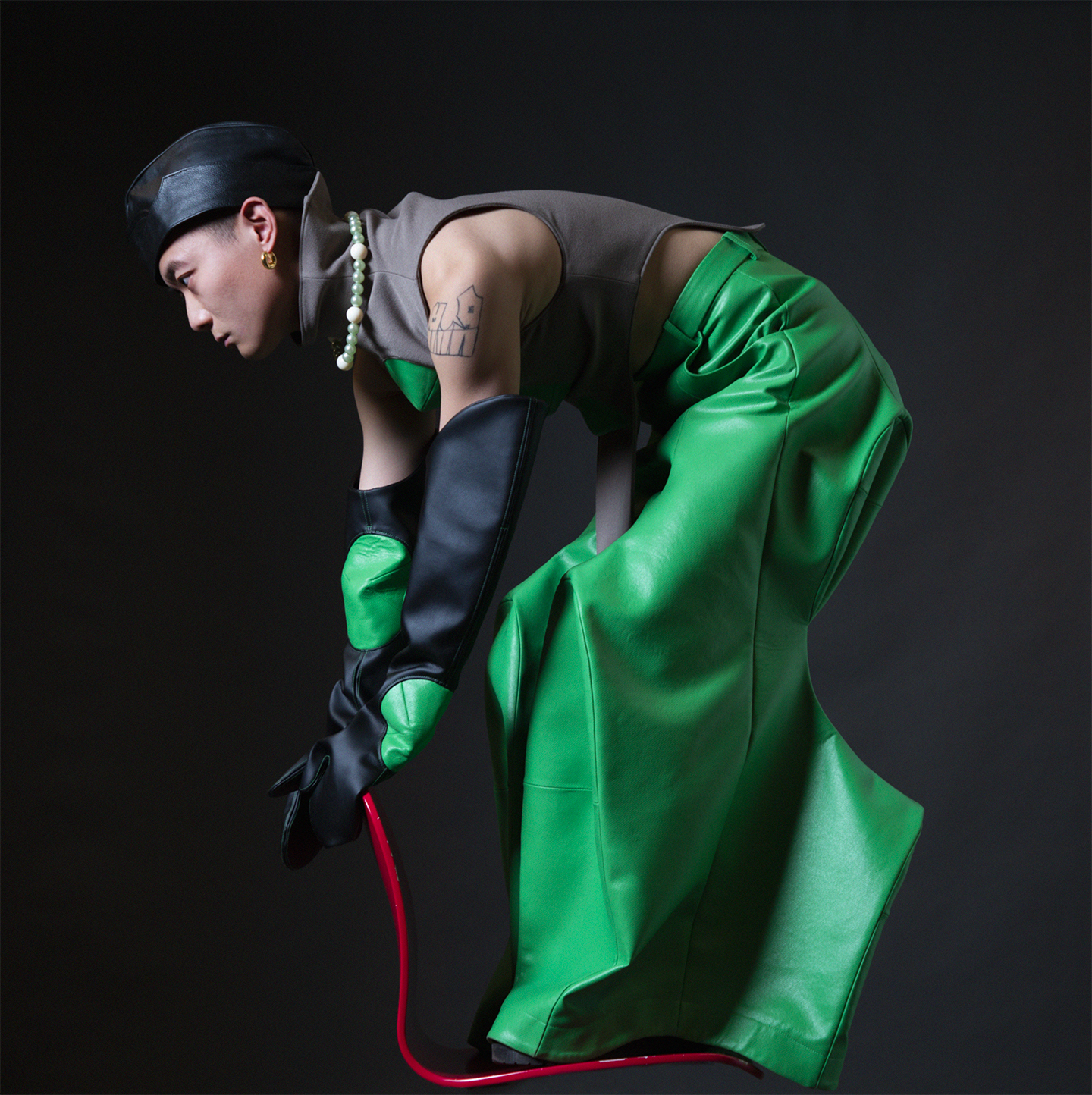
Photographer Nick Clements, tutor in Fashion Writing and Photographic Theory and Practice at Istituto Marangoni London, captured the work of designer and IM alumnus Weihuai Zhang
Contact: 129zwh@gmail.com
Silvia De Vecchi
University Librarian, London



